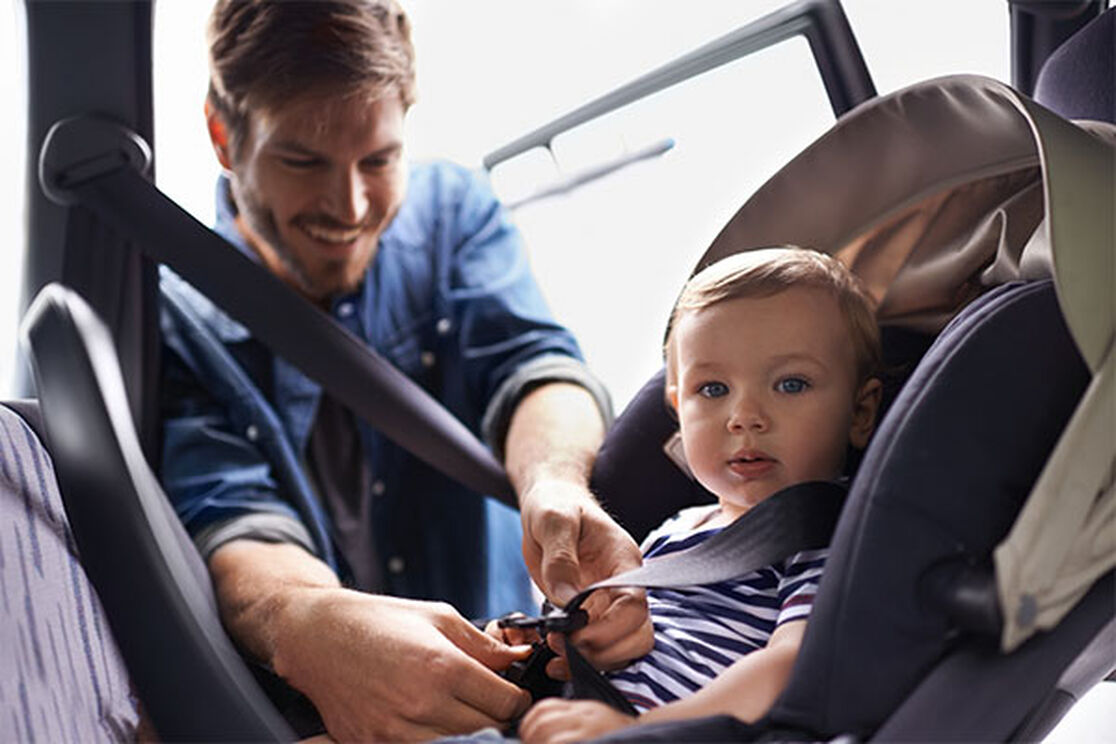Every parent knows what it’s like to rush out the door and quickly leave the house, child in tow. When you finally make it to the car, snacks packed, shoes on, favorite toy in hand, you quickly strap your little one into their car seat and get on your way.
But is your child properly and safely strapped in? The number one leading cause of death in children four years and older is motor vehicle accidents. Child safety seats reduce this risk of fatal injury in infants and children by up to 71%, when compared with a seat belt alone. To avoid the most common errors, review the following safety tips.
5 Tips for Car Seat Safety Installation:
- Confirm that the car seat base is securely tightened. There should be no wiggle room. This is the number one mistake made by parents.
- Angle the car seat as directed by the manufacturer, to prevent your child’s head from flopping forward.
- Ensure that there is adequate spacing between the car seat and vehicle front seat.
- Check the harness straps to ensure that they go through the height-appropriate harness slot (at the shoulder level).
- Place the harness clip at the level of your child’s armpits (not stomach or neck), so that it overlies the breastbone.
As our kids grow, it is equally important to place them in the appropriate car seat for their height and weight. Here are the latest guidelines according to the National Highway Traffic Safety Administration:
- Rear Facing Car Seat (0 - age 2 years): Infants and toddlers should be placed in a rear-facing car seat until they reach the upper weight/height limit for that seat.
- Forward Facing Car Seat (age 2 -5 years): Children should be buckled in a forward-facing car seat until at least age 5, unless they reach the upper weight/height limit sooner.
- Booster seats (age 5-8 years): Once they have outgrown their toddler seat, school-age children should be buckled in a booster seat in the back seat of your car. Adjust the lap belt so that it lies snugly across your child’s upper thighs, and ensure the shoulder belt rests across their chest.
- Seat Belts: Older children (>57 inches) no longer need to use a booster seat once the seat belt fits them properly. The lap belt should lay across the upper thighs (not the stomach) and the shoulder belt across the chest (not the neck).
As busy moms, we spend endless time in the car, running our kids back and forth, and back again. Taking that extra minute to ensure your child is restrained correctly can truly mean the difference between life and death. As emergency physicians, we see the impact that car seats have on a regular basis. And in the event of a car accident, you will certainly be glad you did. That forgotten sippy cup, unmatched shoes, or arriving late to your destination will be a long lost memory. We promise.
 ~ 3MD | THREE MOMMY DOCTORS™, three board-certified emergency physicians. Treating your kids like we treat our own.™
~ 3MD | THREE MOMMY DOCTORS™, three board-certified emergency physicians. Treating your kids like we treat our own.™
The information contained on this post is not intended nor implied to be a substitute for professional medical advice. It is designed to support, not replace, the relationship that exists between a patient and his/her physician. For specific medical advice, diagnoses, and treatment, consult your doctor.
We aim to provide you with the most honest and credible information possible. This article was reviewed for accuracy by The Honest Team and was written based on sources that are linked at the bottom of the article.
blog_review_statement



